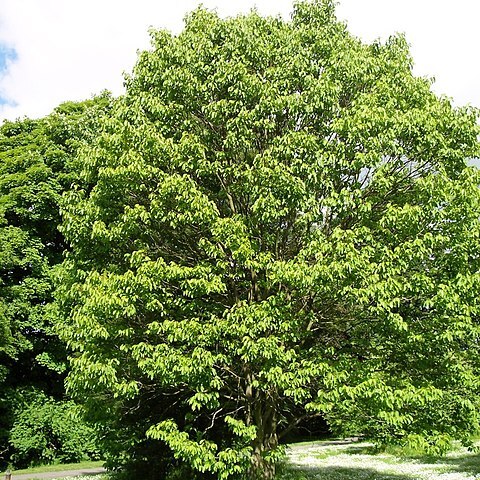Trees [shrubs], unarmed; bud scales present. Leaves deciduous, alternate; blade not gland-dotted; pinnately veined, basal pair of secondary veins more prominent. Inflorescences terminal or axillary, compound dichasia (appearing repeatedly dichotomously branched); peduncles and pedicels becoming fleshy [not fleshy] in fruit. Pedicels present. Flowers bisexual; hypanthium hemispheric, 2–3 mm wide; sepals 5, spreading, white, ovate-triangular to triangular, keeled adaxially; petals 5, white or yellow-green, inrolled full length, elliptic to ovate, short-clawed; nectary fleshy, filling hypanthium; stamens 5; ovary 1/2-inferior, 3-locular; styles 2–3, connate basally. Fruits capsules, appearing drupaceous, tardily dehiscent, exocarp sloughing off from leathery mesocarp prior to dehiscence.
Deciduous or (in Australia) evergreen trees. Leaves alternate, concolorous, ± tripliveined, long-petiolate; stipules free, early caducous. Inflorescences axillary and terminal, comprising 3-to several-flowered contracted cymes in small cymose panicles. Flowers bisexual, 5-merous. Hypanthium cup-shaped. Sepals spreading to reflexed, caducous. Petals longitudinally rolled or irregularly cucullate, clawed, spreading to reflexed. Stamens, subequal to the petals, finally reflexed. Disc filling the hypanthium, smooth, bearing long, sparse, rusty hairs. Ovary inferior; carpels 3. Fruits globoid, capsular, with basal torus, splitting irregularly to release the seeds, borne on a thickened, fleshy, branching infructescence axis.

